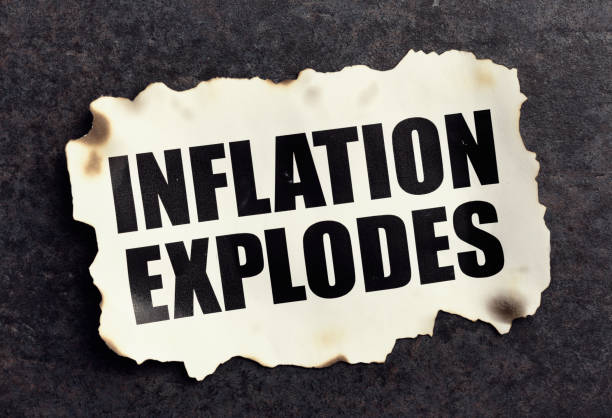
The financial landscape of any country is a labyrinth of complex systems, interconnecting institutions, and intricate market dynamics. One of the most tumultuous events that can send tremors through this delicate network is a financial crisis. In this blog post, we delve into the economic repercussions of a financial crisis, examining the immediate effects, long-term ramifications, global impacts, and the pathways towards recovery and prevention.
Understanding the Basics of a Financial Crisis
A financial crisis is like an earthquake, striking unexpectedly and leaving a path of destruction in its wake. It takes root when there’s a sudden, severe disruption in the nation’s financial markets. Imagine waking up to a plummeting stock market, spiraling asset prices, and insolvency notices piling up. Scary, isn’t it? The triggers can be diverse, ranging from uncontrolled lending and excessive borrowing to severe economic jolts or even market bubbles. Remember the housing bubble in 2008? Exactly like that!
What’s more, this upheaval creates a domino effect. The collective fear and loss of faith among investors can exacerbate the economic downfall. It’s like watching a house of cards collapse, with one card setting off a cascade that brings down the entire structure. A financial crisis isn’t just about numbers on a balance sheet. It’s a real-life drama with profound implications for the lives of ordinary people.
The Immediate Impact of Financial Crises
Imagine the panic setting in as you watch the stock market dive off the deep end, the value of assets spiraling downwards like a runaway rollercoaster, and employment opportunities vanishing like wisps of smoke. That’s the immediate aftermath of a financial crisis. It’s an avalanche that snowballs, gathering momentum, and leaving chaos in its wake.
The financial system, that once seemed invincible, now seems more like a paper tiger, facing potential bankruptcy as credit availability dwindles. Fear replaces faith, the bedrock of the financial system. Suddenly, the once busy and bustling markets seem like ghost towns, as consumer spending grinds to a halt.
In this high stakes situation, governments often don the mantle of the firefighter, trying to douse the economic inferno. They may deploy an array of tools to stem the bleeding, from organizing bailouts for sinking financial institutions to opening the floodgates of emergency lending. While these measures are like a lifeboat in a stormy sea, navigating through the crisis is still a perilous journey. As we move forward, let’s explore the lasting scars that a financial crisis can inflict on an economy.

The Long-Term Ramifications of Economic Downturns
When the dust settles post a financial crisis, the long-lasting impacts come to the forefront. Think of these as the aftershocks that follow an earthquake, rocking the economy for years after the initial disaster. Economies may witness stagnated growth patterns and a stubbornly high unemployment rate that refuses to budge. Due to austerity measures, there’s often a clampdown on public spending, which further squeezes the life out of the economy. Moreover, the national debt tends to bloat up, presenting another set of challenges.
But it’s not just the numbers on a ledger that tell the story. The social fallout is equally profound and, often, more distressing. Wealth inequality can increase, leading to a wider gap between the haves and the have-nots. Poverty rates may rise, pulling more people into the vicious cycle of deprivation. Such economic inequality can foster social discontent, leading to civil unrest.
This vivid picture may make it seem like the aftermath of a financial crisis is a barren, desolate landscape. But remember, every crisis also brings an opportunity to address these long-term ramifications, and that’s where the road to recovery starts. This is a moment for economic reinvention, setting the stage for the next section on recovery and prevention.
Global Effects of a Financial Crisis
The tale of a financial crisis isn’t confined to the borders of one nation; its story is usually written in global ink. Picture ripples in a pond, spreading out from the initial splash. That’s how a financial crisis operates on a global scale, sending tremors through the interconnected web of international economies.
Countries deeply woven into the fabric of global commerce, or those sharing strong financial ties with the affected nation, often find themselves grappling with the after-effects. Like dominos, markets worldwide can stumble, creating a synchronized dance of downturns.
Amid this turbulence, we often witness global institutions like the International Monetary Fund (IMF) and World Bank springing into action. Their intervention typically involves extending financial lifelines and offering policy guidance to dampen the shockwaves.
But, it’s important to note that each crisis has a unique fingerprint, leaving different marks on various economies. For some, it might be a temporary setback, while others may see structural changes. Regardless, the global spread of a financial crisis underscores our shared economic destiny, binding us together in times of boom and bust. As we navigate this shared journey, our understanding of these global effects can guide us towards better-prepared, more resilient economies.

Recovery and Prevention: Lessons Learned from Financial Crises
The aftermath of a financial crisis, while bleak and daunting, provides an arena for both reflection and action. It’s akin to a challenging puzzle, a game of connect-the-dots where we learn from the missteps and strategize for a future fortified against similar calamities.
Treading this path of recovery isn’t a walk in the park; it’s a marathon. It requires patience, perseverance, and above all, a robust plan. Regulatory reforms often step into the spotlight in this phase, aimed at restoring the shaken trust in the financial system and preventing history from repeating itself. A more stringent and vigilant regulatory framework can act as a watchdog, keeping reckless financial behavior in check.
Rebuilding fiscal buffers is another key strategy. Think of these as your emergency fund during a crisis – a safety net that can cushion the blow of any future financial shockwaves.
Moreover, strengthening social safety nets becomes equally important. These safeguards, whether unemployment benefits or healthcare support, can be the lifeline for those affected the most, aiding in a more inclusive recovery.
And as we inch towards a more resilient future, promoting responsible lending and borrowing practices become non-negotiable. From banks to borrowers, everyone plays a part in this. It’s about fostering a culture of financial prudence that prevents the seeds of a crisis from being sown in the first place.
Lastly, we shouldn’t underestimate the power of financial literacy. It’s about empowering individuals, arming them with knowledge to make sound financial decisions, and recognizing the warning signs of an impending crisis. As we navigate through these lessons, we take one step closer towards an economy that’s better prepared to weather future financial storms.
The Silver Lining: Resilience and Reinvention in the Face of Crisis
While the daunting specter of a financial crisis often brings immediate despair and long-term struggles, there’s a brighter side to the narrative worth exploring. The crises, paradoxically, can be the fertile grounds for innovation and change. Out of the debris of economic downturns often sprout new enterprises, cutting-edge technologies, and flourishing industries. This testifies to the underlying resilience and vibrancy of an economy that refuses to stay down.
Not only does a crisis stimulate growth and diversification, but it also illuminates the hidden weak spots in our economic fabric. In the glaring light of a crisis, these flaws stand exposed, offering valuable insights for change. They challenge policymakers, corporations, and individuals to reassess their strategies, to adapt and bolster their economic infrastructures.
The economic metamorphosis triggered by a financial crisis may be grueling, but it’s often transformative, replacing the old with the new, and the weak with the strong. With this perspective, the aftermath of a crisis isn’t merely a scene of devastation; it’s a canvas of potential and opportunity, ready to be painted with colors of resilience and reinvention. Therefore, even amidst the gloom of a crisis, the shimmering silver lining of hope and renewal never fades away.






Good 👍
Maslaallah ❣️
Hey there You have done a fantastic job I will certainly digg it and personally recommend to my friends Im confident theyll be benefited from this site
Hi i think that i saw you visited my web site thus i came to Return the favore I am attempting to find things to improve my web siteI suppose its ok to use some of your ideas
you are in reality a just right webmaster The site loading velocity is incredible It seems that you are doing any unique trick In addition The contents are masterwork you have performed a wonderful task on this topic
Usually I do not read article on blogs however I would like to say that this writeup very compelled me to take a look at and do it Your writing style has been amazed me Thank you very nice article
My brother suggested I might like this blog He was totally right This post actually made my day You can not imagine simply how much time I had spent for this info Thanks
Its like you read my mind You appear to know so much about this like you wrote the book in it or something I think that you can do with a few pics to drive the message home a little bit but other than that this is fantastic blog A great read Ill certainly be back
I loved as much as you will receive carried out right here The sketch is tasteful your authored subject matter stylish nonetheless you command get got an edginess over that you wish be delivering the following unwell unquestionably come further formerly again as exactly the same nearly very often inside case you shield this hike
Your place is valueble for me. Thanks!…
Its like you read my mind! You seem to know a lot about this, like you wrote the book in it or something. I think that you could do with some pics to drive the message home a little bit, but other than that, this is great blog. A great read. I’ll definitely be back.
Hiya, I am really glad I have found this info. Today bloggers publish just about gossips and web and this is really annoying. A good blog with interesting content, this is what I need. Thank you for keeping this site, I’ll be visiting it. Do you do newsletters? Can not find it.
A powerful share, I simply given this onto a colleague who was doing a bit of evaluation on this. And he in actual fact purchased me breakfast as a result of I found it for him.. smile. So let me reword that: Thnx for the deal with! However yeah Thnkx for spending the time to debate this, I really feel strongly about it and love studying extra on this topic. If attainable, as you grow to be experience, would you thoughts updating your blog with more particulars? It’s extremely useful for me. Big thumb up for this weblog put up!
When I originally commented I clicked the -Notify me when new comments are added- checkbox and now each time a comment is added I get four emails with the same comment. Is there any way you can remove me from that service? Thanks!
Thanks – Enjoyed this post, is there any way I can get an update sent in an email when you write a new post?
I really like your writing style, superb info , thanks for putting up : D.
k8 カジノ 日替わり ボーナス
この記事の実用性は驚くべきものがあり、大変役に立ちました。
I am really impressed with your writing skills as well as with the layout on your weblog. Is this a paid theme or did you customize it yourself? Anyway keep up the excellent quality writing, it’s rare to see a great blog like this one today..
A lot of of what you mention happens to be astonishingly legitimate and that makes me ponder why I had not looked at this in this light before. This piece really did switch the light on for me personally as far as this particular subject matter goes. But at this time there is actually one particular position I am not too comfy with so whilst I attempt to reconcile that with the actual core idea of the issue, permit me see just what all the rest of your subscribers have to point out.Well done.
Thank you a bunch for sharing this with all of us you really recognise what you are speaking approximately! Bookmarked. Please additionally talk over with my site =). We can have a hyperlink change arrangement among us!
What Is Sumatra Slim Belly Tonic? Sumatra Slim Belly Tonic is a weight management formula that is said to eliminate excess body fat naturally.
I gotta favorite this internet site it seems extremely helpful handy
Your style is so unique compared to many other people. Thank you for publishing when you have the opportunity,Guess I will just make this bookmarked.2
geinoutime.com
Jiang Yan은 자신이 없으면 돈을 돌려받을 수 있다고 생각합니다.
I truly enjoy reading through on this website , it has wonderful content.
geinoutime.com
“전화해!” 홍지황제의 목소리가 순식간에 훨씬 더 거칠어졌다.
Very interesting information!Perfect just what I was looking for! “Music is a higher revelation than philosophy.” by Ludwig van Beethoven.
I just like the helpful info you provide for your articles. I’ll bookmark your blog and take a look at once more here regularly. I am relatively certain I’ll be informed lots of new stuff proper here! Best of luck for the following!